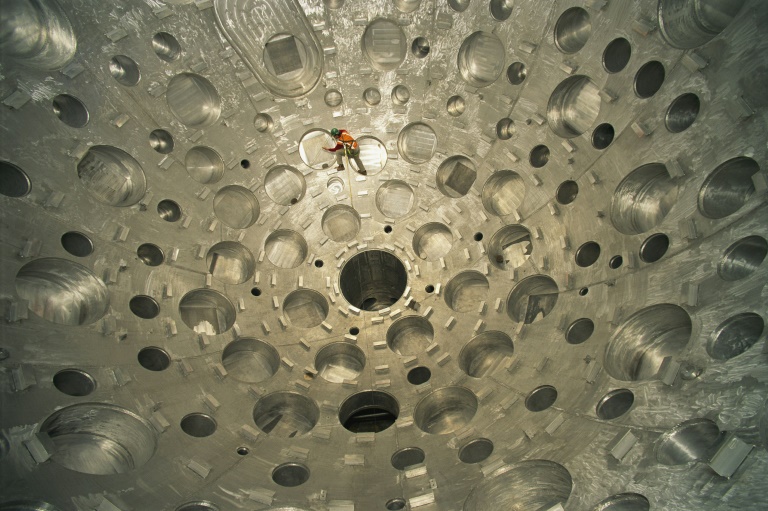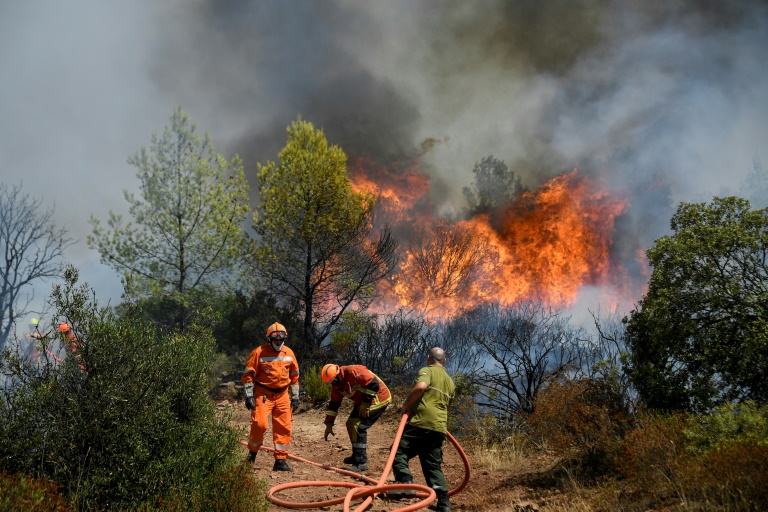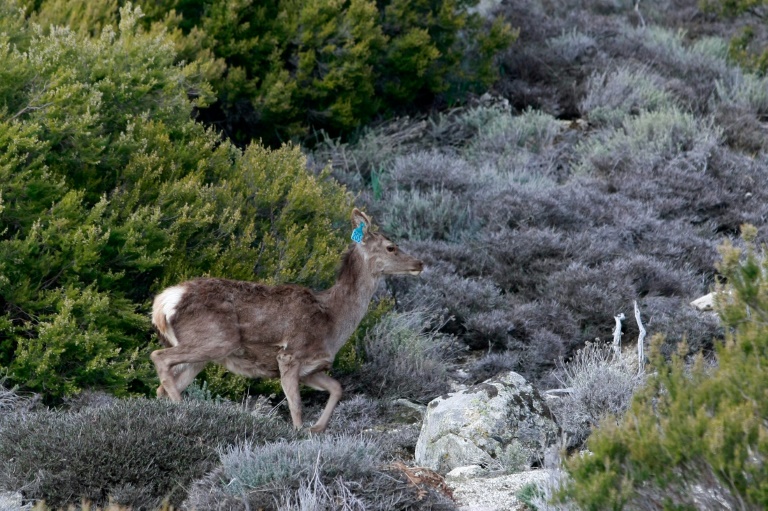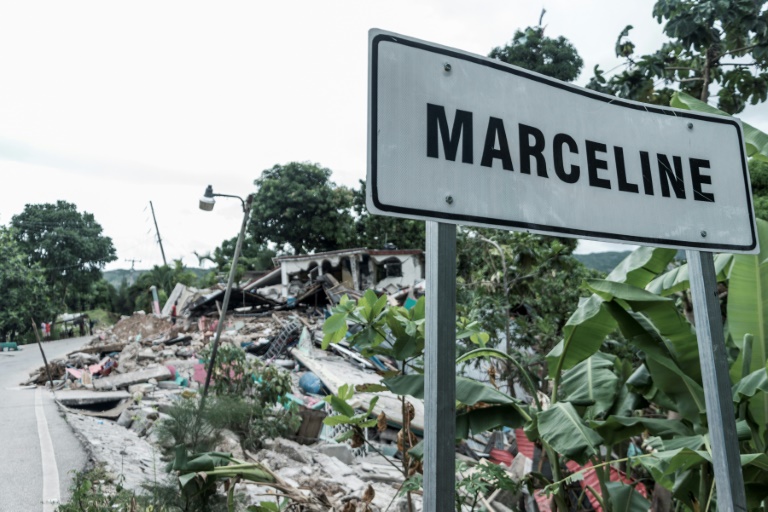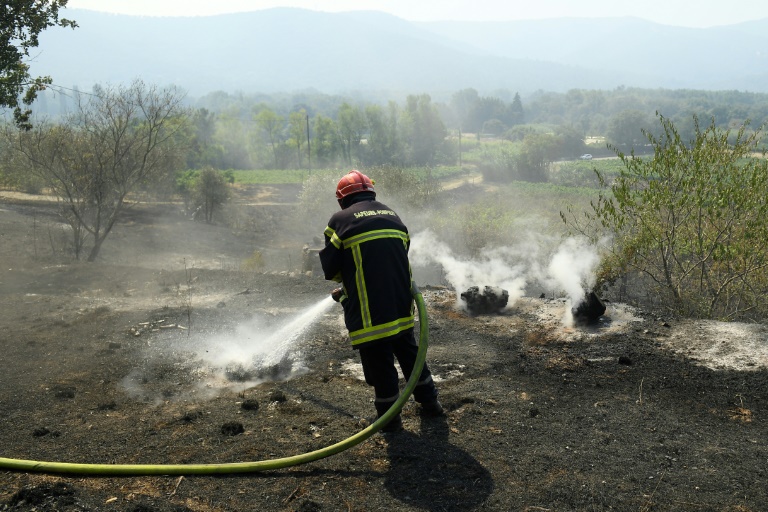Hundreds of French firefighters battled to contain a raging wildfire near the glitzy Mediterranean resort of Saint-Tropez on Tuesday, with thousands of residents and holidaymakers forced to evacuate.
Roughly 900 firefighters were using high-pressure hoses, aircraft and helicopters in an attempt to control the flames, which began racing through the scrubland and trees of the Plaine des Maures nature reserve on Monday evening.
“The coming hours will be absolutely decisive” for the firefighting effort, President Emmanuel Macron said during a visit to first responders.
While Macron added that “the battle is ongoing and the fire has not yet been contained, stabilised,” he said that the firefighters’ courage had managed to “avoid the worst” with no casualties so far.
Eric Grohin, a colonel in the Var department firefighters, said the flames were regularly leaping gaps of up to 800 metres (900 yards), making it difficult to hem the blazes in.
“There’s not much we can do beyond protecting human lives and homes,” he said.
Among the thousands moved to the safety of municipal buildings and schools were 1,300 people staying at a campsite in the village of Bormes-les-Mimosas down the coast from Saint-Tropez.
“Thousands of people have been evacuated as a precautionary measure, but there are no victims,” fire service spokeswoman Delphine Vienco told AFP on Tuesday morning, adding that the blaze was “still very fierce”.
“The fire is very large, it’s a very difficult fight,” said Vienco, citing “adverse conditions, with strong winds and high temperatures.”
Many tourists could be still be seen enjoying the sunshine on the nearby Cote d’Azur beaches, however, as Canadair firefighting aircraft swooped in regularly to fill their tanks from the sea before returning to the smoking hills nearby.
Others loaded up their cars and headed for safety, leading officials to plead for people in secure areas to stay at home and avoid blocking roads used by the emergency services.
“We started smelling the smoke around 7 pm (1700 GMT), then we saw the flames on the hill,” said Cindy Thinesse, who fled the Mole campsite near Cavalaire on Monday evening. “We hesitated, but when we saw that, we decided to leave,” she told AFP.
President Emmanuel Macron and his wife Brigitte are on holiday at the nearby Bregancon Fort and he announced he would visit the scene later Tuesday.
– Portugal, Spain fires –
Large blazes have already ravaged parts of Turkey, Bulgaria, Albania, Northern Macedonia, Greece, Italy, Spain, Portugal, Israel, Tunisia, Algeria and Morocco this year.
The Mediterranean basin has long faced seasonal wildfires linked to its dry and hot weather in the summer, but climate scientists warn they will become increasingly common because of man-made global warming.
Around 600 firefighters in Portugal were also battling a fresh blaze in Castro Marim in the Algarve region on Tuesday, a tourist hotspot in the far south of the country close to the border with Spain.
Around 9,000 hectares have been burned and one firefighter was briefly admitted to hospital for treatment for burn injuries, local officials said, although the blaze was later declared under control.
A separate fire in central Spain near Navalacruz is also being brought under control, regional authorities have said, but around 12,000 hectares of forest have gone up in flames.
– ‘Such speed’ –
The French fire is believed to have started near a motorway that runs through the Plaine des Maures nature reserve some 30 kilometres (18 miles) northwest of Saint-Tropez.
The wind-fanned blaze had ripped through some 6,500 hectares of forest and scrubland by Tuesday, according to the fire department.
“We’ve never seen it spread with such speed, it was three or four times the usual,” Thomas Dombry, mayor of La Garde-Freinet village, told AFP.
Authorities were counting the cost to the environment even as the fires still raged on Tuesday.
“Half of the Plain des Maures nature reserve has been devastated. It is a disaster,” said Concha Agero, deputy director of the French Office of Biodiversity, adding that the reserve “is one of the last spots sheltering the Hermann tortoise.”
Charred power lines lay on the ground Tuesday, as well as vines in place.
Many trees were burnt around their trunks but their branches were intact, suggesting the fire had ripped through at speed.
The fire came close to La Garde-Freinet during the night but spared the settlement, which was badly hit in 2003 by a catastrophic blaze that cost the lives of three firefighters.
bur-est-ol-adp/tgb/lc

